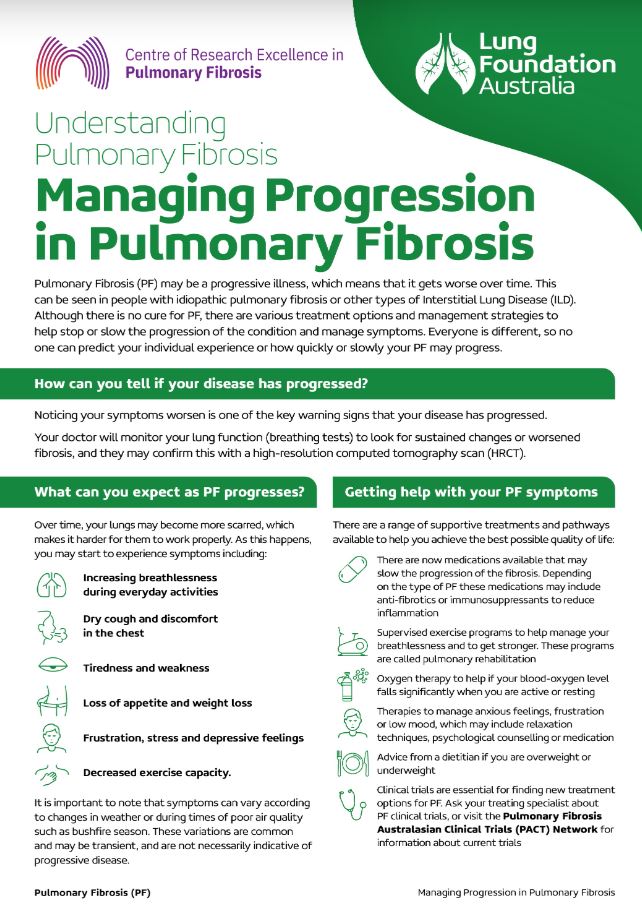The Managing Progression in Pulmonary Fibrosis (PF) fact sheet provides an understanding of progressive symptoms associated with Pulmonary Fibrosis (PF). The resource provides information to support and manage these symptoms and provides an overview of the treatments available for IPF.
Pulmonary Fibrosis (PF) may be a progressive illness, which means that it gets worse over time. This is often seen in Idiopathic Pulmonary Fibrosis (IPF) or other types of Interstitial Lung Disease (ILD). While there is no cure, various treatments and management strategies can help slow the progression and manage symptoms. Each individual’s experience with PF is unique, and the rate of progression can vary.
As PF progresses, the lungs become more scarred, making it harder for them to function properly.
Common symptoms include:
- Increasing breathlessness during everyday activities
- Dry cough and chest discomfort
- Tiredness and weakness
- Loss of appetite and weight loss
- Frustration, stress, and depressive feelings
- Decreased exercise capacity
There are a number of treatments that can help manage PF symptoms and slow disease progression. These include medications, such as anti-fibrotics and immunosuppressants to reduce inflammation, pulmonary rehabilitation, oxygen therapy, psychological support, nutritional advice, and clinical trials.
It is important to have regular check-ups with your healthcare provider to monitor lung function and overall health. This may be done through breathing tests, to look for changes or worsened fibrosis and may use high-resolution computed tomography (HRCT) scans to confirm changes.
Advance care planning is crucial for ensuring that patients’ wishes are known and respected. This includes discussing care preferences, palliative care options, and legal arrangements like Advanced Care Directives and Power of Attorney.
Palliative care can be an important part of planning the future with PF. It focuses on living well with PF and managing symptoms towards the end of life. It involves a team of healthcare professionals providing support in various settings, including hospitals, hospices, nursing homes, or at home.
Was this page helpful?
Good job! Please give your positive feedback
How could we improve this post? Please Help us.
